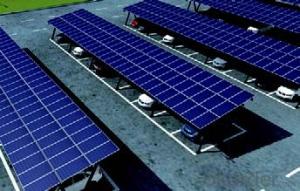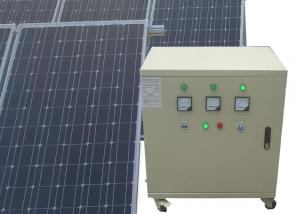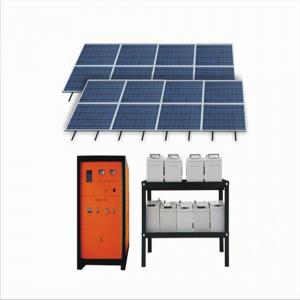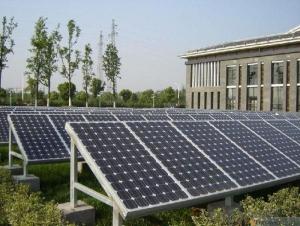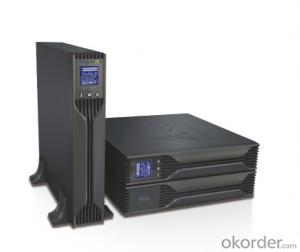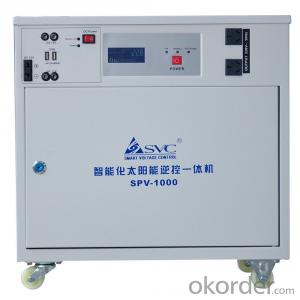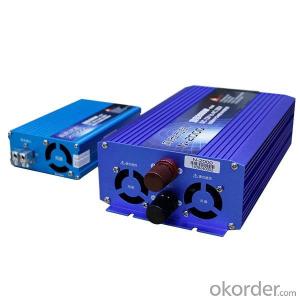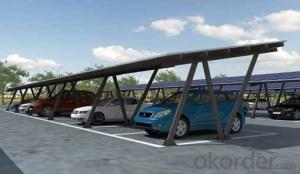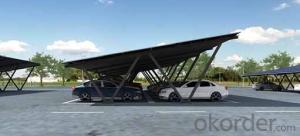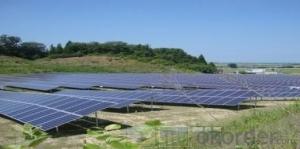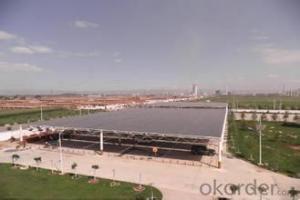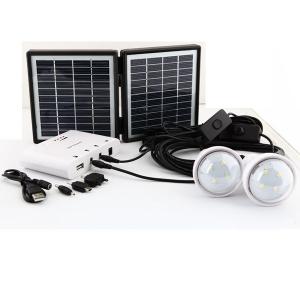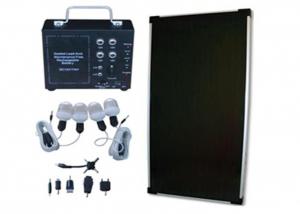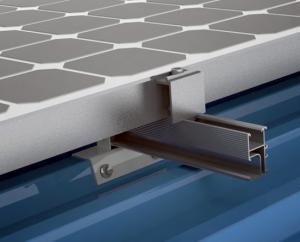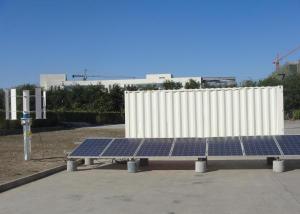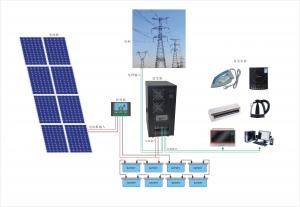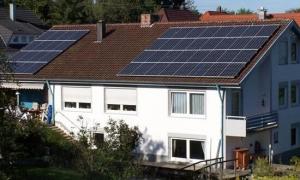Solar Energy Systems Ft Pierce Carport System Solar Mounting System
- Loading Port:
- China Main Port
- Payment Terms:
- TT OR LC
- Min Order Qty:
- -
- Supply Capability:
- -
OKorder Service Pledge
OKorder Financial Service
You Might Also Like
Packaging & Delivery
Packaging Detail:Normal package seaworthy
Delivery Detail:15 days
Specifications
Easy installation Competitive price TUV&SGS test report & CSA certification 15-warranty
Specifications
1) Super smooth beautiful appearance,outstanding quality,large supply.
2) Available in customized surface finishes.
3) Well machined,for example,cutting,drilling and milling with excellent tolerance.
4) Meet with customer’s designs and supply you best price.
5)Usages:Supply for solar panel modules.
Technical characteristics
Installation site:
ground,hillside,and grassland
Installation angle
it is based on customers’ requirements
Installation height
it is basedon customers’ requirements
Solar panel type; with or without frame
Components arrangement :horizontal or vertical
Support track
aluminum alloy extrusion
Quality warranty
15 years
Advantages
1)Quick installation: with high degree of pre-installed rate, the system could be easily installed by using galvanized carbon steel rails for PV Stent, and specially designed connection parts of the PV bracket, which could reduce installation time and cost greatly.
2)Offer unmatched durability: with all structural components comprised of high class stainless steel and anodized aluminum alloy, it is designed for 25 years service life and backed by 15 years warranty.
3)Stand up to extreme weather: The SuninTek solar mount is designed to stand up to the extreme weather complied with the AS/NZ 1170 and other international structure load standard by the skilled engineer. The main support components also have been tested to guarantee its structure and load-carrying capacity.
4)Provide broad installation flexibility: These systems accommodate most commercially available framed solar panels , and they can scale easily from small to large, multi-megawatt installations.
5)Diversified Application: The PV mounting system produced can be adopted by various types of PV cells panels which you can find in the market. It can serve for both mini solar power system and huge plant with megawatt capability.
Main features
1. Installation cost savings.
2. Save installation time.
3. Increase the mechanical strength of solar energy mounting to ensure that wind requirements.
4. The outdoor for installation of solar energy.
5. Length can be customized according to customers.
6. Service life of up to 25 years.
7. Products through the international certification.
8. Stent material composition of the galvanized steel and aluminum.
9. 15 years system and structural guarantee.
10.Flexible post spacing withstands different wind & snow loads.
11. High quality material in Aluminium 6005-T5 and SUS 304.
12.Screws and nuts go with every components needed.
13.Mechanical calculation and reliability tested to ensure highest product quality.
- Q: How does the efficiency of solar panels vary based on the angle and orientation?
- The efficiency of solar panels may vary depending on the angle and orientation they are positioned in. The performance of solar panels can be significantly impacted by the tilt angle at which they are set. It is ideal to position solar panels at an angle that allows them to receive maximum sunlight exposure throughout the day. The highest efficiency of solar panels is achieved when they are oriented perpendicular to the sun's rays. This means that solar panels should directly face the sun without any obstruction or shading. When solar panels are properly angled, they can capture the maximum amount of sunlight, resulting in higher energy production. The orientation of solar panels also plays a vital role in their efficiency. In the Northern Hemisphere, solar panels should generally face south to receive the most sunlight. Facing south allows panels to receive sunlight for the longest duration during the day. However, in the Southern Hemisphere, solar panels should face north for optimal efficiency. Improperly angled or oriented solar panels can experience a decrease in efficiency. If panels are tilted too steeply or too shallow, they may not receive the maximum amount of sunlight. Similarly, if solar panels are not facing the correct direction, they may not efficiently capture sunlight. It is important to note that solar panels can still generate electricity even if they are not perfectly angled or oriented. However, their efficiency will be lower, resulting in a lower energy output. Factors such as temperature, dust, and shading from nearby objects or trees can also affect the efficiency of solar panels. To maximize the efficiency of solar panels, it is advisable to seek professional consultation. Experts can assess the specific location and provide guidance on the optimal angle and orientation for the panels. By ensuring that solar panels are correctly angled and oriented, individuals can maximize energy production and enjoy the benefits of solar power.
- Q: What is the impact of air pollution on solar panel efficiency?
- Air pollution can significantly reduce the efficiency of solar panels by blocking or scattering sunlight, leading to decreased energy production. The presence of particulate matter, such as dust, smog, or soot, on the surface of solar panels reduces the amount of sunlight that can penetrate and reach the photovoltaic cells, thus hindering their ability to convert sunlight into electricity. Additionally, air pollution can create a layer of dirt or grime on the panels, further diminishing their efficiency. Regular cleaning and maintenance of solar panels are essential to mitigate the impact of air pollution and ensure optimal energy generation.
- Q: Can solar energy systems be used for powering off-grid eco-hospitals?
- Yes, solar energy systems can be effectively used for powering off-grid eco-hospitals. Solar panels can be installed to harness and convert sunlight into electricity, providing a sustainable and renewable source of power. This can help reduce dependency on traditional energy sources and mitigate the environmental impact of hospitals. Additionally, solar energy systems can be combined with battery storage solutions to ensure a continuous power supply even during periods of low sunlight or at night. This makes solar energy an ideal choice for off-grid eco-hospitals, promoting both environmental sustainability and energy independence.
- Q: Can solar energy systems be used for powering electric vehicle rental services?
- Certainly, electric vehicle rental services can utilize solar energy systems. The sun's rays can be harnessed by installing solar panels on the roofs of rental service facilities or parking lots, generating electricity. This generated electricity can then be used to charge the electric vehicle batteries, ensuring they are always available for rental. By incorporating solar energy, rental services can reduce their dependence on the grid and minimize their carbon footprint. Moreover, customers can benefit from convenient and environmentally-friendly charging options through the establishment of solar-powered charging stations at various locations. In conclusion, the integration of solar energy systems into electric vehicle rental services not only encourages the use of renewable energy but also enhances the sustainability and eco-friendliness of the transportation industry.
- Q: Can a solar energy system power an entire household?
- Yes, a solar energy system has the potential to power an entire household. However, the feasibility of completely powering a household with solar energy depends on various factors such as the size of the system, energy consumption patterns, and location. It is essential to assess the energy needs of the household, consider the available sunlight, and design an appropriately sized solar system to ensure sufficient power generation. Additionally, incorporating energy-efficient practices and technologies can further enhance the ability of a solar energy system to meet the household's energy requirements.
- Q: Can solar energy systems be used for powering off-grid eco-retirement communities?
- Yes, solar energy systems can definitely be used for powering off-grid eco-retirement communities. Solar power is a reliable and sustainable source of energy that can provide electricity for various needs, such as lighting, heating, cooling, and powering appliances. By installing solar panels and utilizing energy storage systems, off-grid eco-retirement communities can reduce their reliance on traditional power grids and minimize their carbon footprint. This not only helps in achieving energy independence but also promotes a greener and more sustainable lifestyle for the residents.
- Q: Can a solar energy system be installed in an area with a high earthquake risk?
- It is entirely possible to install a solar energy system in an area prone to earthquakes, but it requires meticulous planning and engineering to ensure its stability and ability to withstand seismic activities. When installing a solar energy system in an earthquake-prone region, it is essential to consider the unique requirements of the area and adhere to local building codes and regulations. These codes often provide guidelines and specifications for constructing structures that can endure the forces of an earthquake. To minimize the risks associated with earthquakes, several measures can be taken during the installation process: 1. Foundation Design: The solar energy system must have a sturdy foundation specifically designed to withstand ground shaking. Properly anchoring the system will prevent it from toppling or sliding during an earthquake. 2. Structural Design: The structural components of the solar energy system, such as mounting frames and supports, should be engineered to endure seismic forces. Additional reinforcements like bracing or crossbars can be added to enhance stability. 3. Flexible Wiring: Electrical wiring within the solar energy system should be installed using flexible conduit and connectors. This ensures that the system can move during an earthquake without causing damage or electrical failures. 4. Maintenance and Inspections: Regular maintenance and inspections are essential to identify any potential weaknesses or damage to the solar energy system. Prompt repairs or reinforcements can then be carried out, reducing the risk of failure during an earthquake. By adhering to these guidelines and collaborating closely with experienced engineers and solar energy professionals, it is possible to install a solar energy system in an earthquake-prone area. This not only facilitates the utilization of clean and renewable energy but also contributes to the resilience and sustainability of the local energy infrastructure.
- Q: How efficient are solar energy systems?
- Solar energy systems are highly efficient as they convert sunlight directly into electricity or heat without any moving parts. With advancements in technology, solar panels have become more efficient, reaching conversion rates of up to 20-25%. However, overall efficiency can vary depending on factors such as location, weather conditions, and system design. Nonetheless, solar energy systems have proven to be a sustainable and reliable source of clean energy.
- Q: Can solar energy systems be installed on all types of roofs?
- Yes, solar energy systems can be installed on most types of roofs, including flat, sloped, and even curved roofs. However, the suitability of the roof for solar installation may depend on factors such as its orientation, shading, structural integrity, and available space. It is recommended to consult with a professional solar installer to assess the feasibility of installing solar panels on a specific type of roof.
- Q: Are solar energy systems cost-effective?
- Yes, solar energy systems are cost-effective in the long run. While the initial installation cost may be higher compared to traditional energy sources, solar energy systems can save homeowners and businesses significant amounts of money on their electricity bills over time. Additionally, there are various government incentives and tax credits available that further enhance the cost-effectiveness of solar energy systems. Furthermore, solar energy is a renewable and clean source of power, reducing reliance on fossil fuels and benefiting the environment.
Send your message to us
Solar Energy Systems Ft Pierce Carport System Solar Mounting System
- Loading Port:
- China Main Port
- Payment Terms:
- TT OR LC
- Min Order Qty:
- -
- Supply Capability:
- -
OKorder Service Pledge
OKorder Financial Service
Similar products
Hot products
Hot Searches
Related keywords
